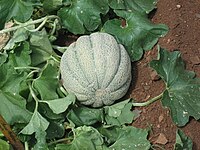
Potential cancer chemopreventive and anticancer constituents from the fruits of Ficus hispida L.f. (Moraceae).
Sign Up to like & getrecommendations! Published in 2018 at "Journal of ethnopharmacology"
DOI: 10.1016/j.jep.2017.11.016
Abstract: ETHNOPHARMACOLOGICAL RELEVANCE Ficus hispida L.f. (Moraceae) has been used as alternative for traditional medicine in the treatment of various ailments including cancer-cure. The aim of this study was to evaluate the cancer chemopreventive and anticancer… read more here.
Keywords: chemopreventive anticancer; hispida; ficus hispida; hispida moraceae ... See more keywords

Chemical composition of Gastrocotyle hispida (Forssk.) bunge and Heliotropium crispum Desf. and evaluation of their multiple in vitro biological potentials
Sign Up to like & getrecommendations! Published in 2021 at "Saudi Journal of Biological Sciences"
DOI: 10.1016/j.sjbs.2021.09.040
Abstract: Medicinal plants largely serve as a source of bioactive compounds in traditional medicines to cure various diseases. The present study was aimed at chemical composition, antioxidant, antimicrobial, cytotoxic and antihemolytic potential of five different extracts… read more here.
Keywords: composition gastrocotyle; chemical composition; hispida; spectroscopy ... See more keywords

Contrasting the population genetic structure of a specialist (Hexaglandula corynosoma: Acanthocephala: Polymorphidae) and a generalist parasite (Southwellina hispida) distributed sympatrically in Mexico
Sign Up to like & getrecommendations! Published in 2023 at "Parasitology"
DOI: 10.1017/s0031182023000033
Abstract: Abstract Abstract Polymorphidae is a monophyletic group of acanthocephalans distributed worldwide. Within this family, Hexaglandula corynosoma is a specialist species that uses a single bird species as a definitive host. Southwellina hispida is a generalist… read more here.
Keywords: population genetic; hexaglandula corynosoma; structure; hispida ... See more keywords

Overexpression of ThSCL32 confers salt stress tolerance by enhancing ThPHD3 gene expression in Tamarix hispida.
Sign Up to like & getrecommendations! Published in 2023 at "Tree physiology"
DOI: 10.1093/treephys/tpad057
Abstract: GRAS transcription factors belong to the plant-specific protein family. They are not only involved in plant growth and development but also in plant responses to a variety of abiotic stresses. However, to date, the SCL32… read more here.
Keywords: gene; expression; tolerance; thscl32 ... See more keywords

First Report of Powdery Mildew Caused by Podosphaera xanthii on Benincasa hispida in Korea.
Sign Up to like & getrecommendations! Published in 2021 at "Plant disease"
DOI: 10.1094/pdis-02-21-0253-pdn
Abstract: Benincasa hispida (Thunb.) Cogn. (syn. B. cerifera Savi, Cucurbita hispida Thunb.), called wax gourd or ash gourd, is a cucurbitaceous vine grown for medicinal purposes and commercial values of its large fruits in Southeast Asia… read more here.
Keywords: benincasa hispida; hispida; powdery mildew; xanthii ... See more keywords

First report of mosaic disease associated with zucchini tigre mosaic virus in wax gourd (Benincasa hispida) in Taiwan.
Sign Up to like & getrecommendations! Published in 2022 at "Plant disease"
DOI: 10.1094/pdis-12-21-2827-pdn
Abstract: Wax gourd (Benincasa hispida) is a popular cucurbitaceous summer crop used for culinary purposes, confectionery, and refreshing drinks in Asia. During a field survey for cucurbit viral diseases at Beidou, Changhua in May 2017, B.… read more here.
Keywords: gourd; wax gourd; virus; mosaic ... See more keywords

A transcriptome analysis of Benincasa hispida revealed the pathways and genes involved in response to Phytophthora melonis infection
Sign Up to like & getrecommendations! Published in 2022 at "Frontiers in Plant Science"
DOI: 10.3389/fpls.2022.1106123
Abstract: Wilt disease caused by Phytophthora melonis infection is one of the most serious threats to Benincasa hispida production. However, the mechanism of the response of B. hispida to a P. melonis infection remains largely unknown.… read more here.
Keywords: melonis; infection; melonis infection; analysis ... See more keywords